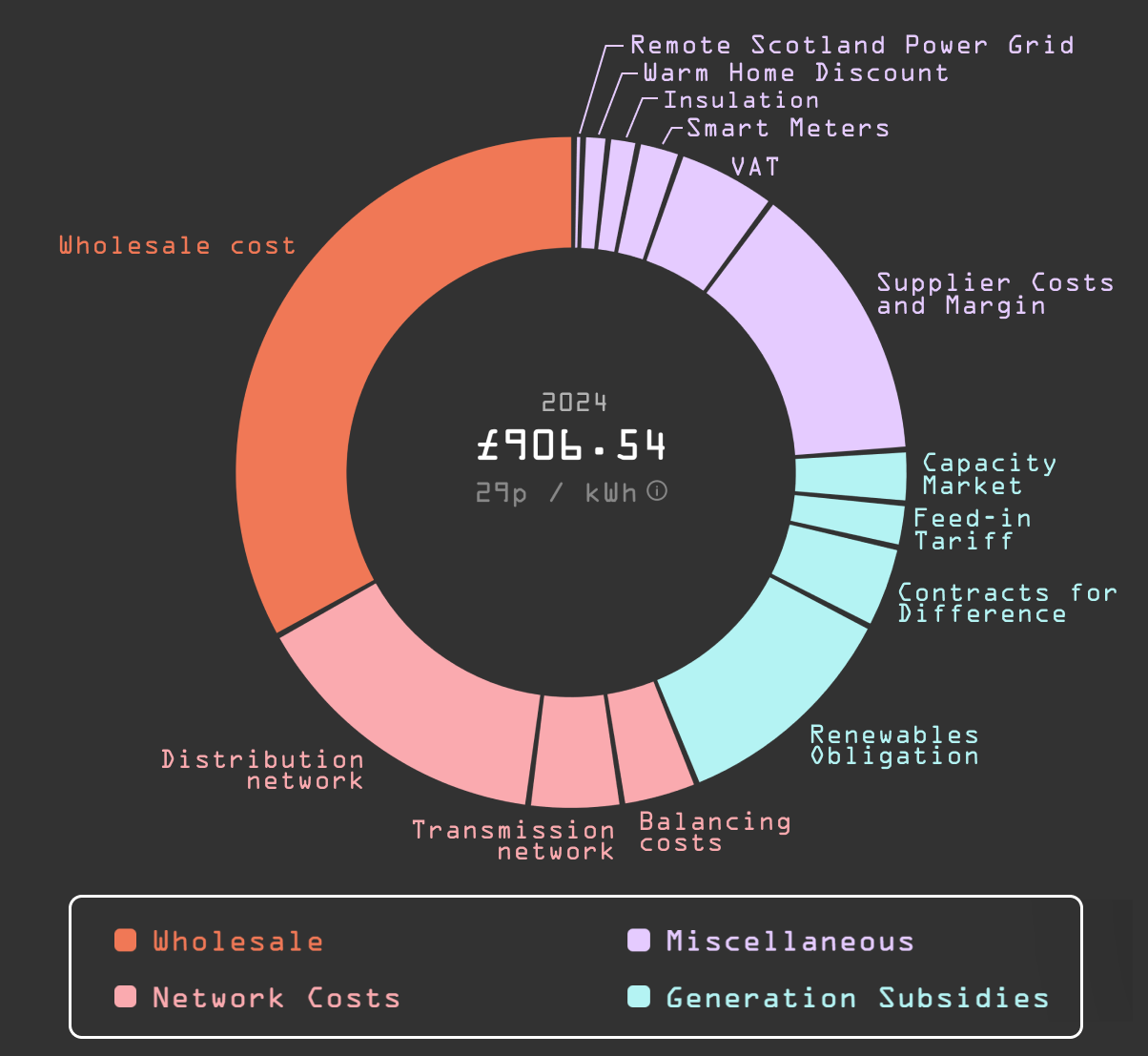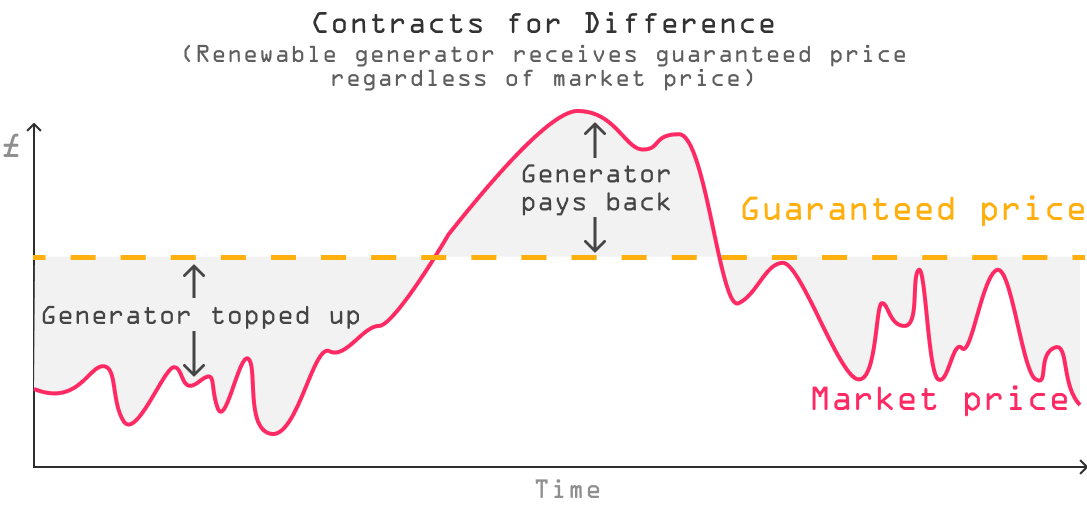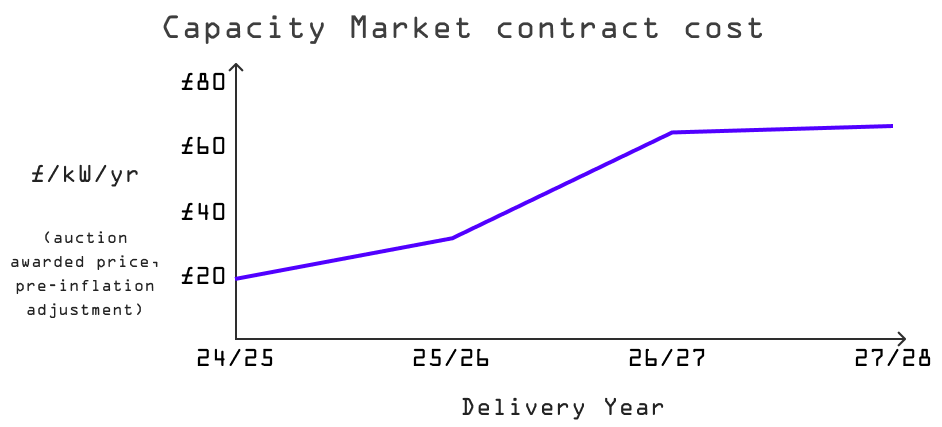Why are UK electricity bills so expensive?
I recently built a website that breaks down the cost of a UK electricity bill.

It's interactive, and I'd recommend visiting it before reading this post. Check it out here: electricitybills.uk
Here are three interesting things about the data.
#1: The wholesale power cost is only one third of an electricity bill.
The wholesale price is the actual cost of buying electricity on the open market. But the average bill is triple that amount.

The remaining 2/3 of the bill is made up of three parts:
- Network costs: paying for the wires and substations of the power grid
- Generation costs: subsidising strategically important generation, like offshore wind, household solar, and firm gas.
- Miscellaneous: running a utility company customer service department, various taxes, etc.
#2: These charges are about to rise, a lot.
Network costs are about to skyrocket. Investment in the UK power grid has been stagnant for 20 years, because UK power demand has been flat for 20 years. But now, the UK urgently needs to expand the grid. Energy that used to flow through pipelines will need to flow through wires.
Contracts for Difference are the UK's flagship scheme for supporting renewables, and they will add an increasing cost to electricity bills. More than half of the contracts already allocated have yet to be activated, and the next contract allocation round is expected to be the biggest yet.
Note: CfDs do insulate consumers from high wholesale prices (during the energy crisis, CfDs reduced consumer bills), but on average they add cost.

The Capacity Market pays firm generation & demand response to be on standby, to prevent blackouts. Contracts are mostly allocated four years in advance, and the cost will ~triple to 2028.

#3: Existing costs are locked in for a long time.
The UK ran two pretty expensive green subsidies in the 2010s.
The Renewables Obligation mandates utilities to buy credits from wind and solar farms. It closed to new projects in 2017, but payments to existing projects will continue until 2037. It makes up around 10% of an average bill.
The Feed in Tariff pays households with solar panels a very tasty rate for exported energy. It closed to new applications in 2019, but payments will continue up to 2044 for some projects.
Being an early adopter of renewables has been expensive for the UK. You might argue that we should have waited an extra decade, since renewables would now be much cheaper. But the reality of learning curves means that renewables only got cheap because people built them. If everyone waits for someone else to decarbonise first, we won't get very far.
But we can learn from policy mistakes in the past. Schemes like the Feed in Tariff did not correct quickly enough when solar prices fell, leading to spiralling policy costs that were completely decoupled from market dynamics.
The future of cheap, clean power.
Let's say that we want electricity to be radically cheap in future - say £50 / MWh.
Well, network costs are already ~£70 / MWh and will increase steadily. We've missed our target, before we've even paid to generate electricity. There are only two solutions here:
- Ditch the power grid. Use local solar generation, and a lot of batteries. This works well in most of the world, but less so in northern Europe (it's not very sunny).
- Utilise the existing power grid better. Instead of expanding the grid just to service peak demand, improve our grid utilisation by "filling in the rectangle" throughout the day. (This is part of what we're working on at Axle)
The UK has achieved the fastest rate of grid decarbonisation among advanced economies. A lot of this progress occurred when renewables were still expensive, so we are stuck with a cost hangover. Luckily, renewables are getting much cheaper, so the tradeoffs in future policy are very different.
Thanks for reading, I'd love to hear your thoughts on the site. electricitybills.uk
Warmly,
Ben